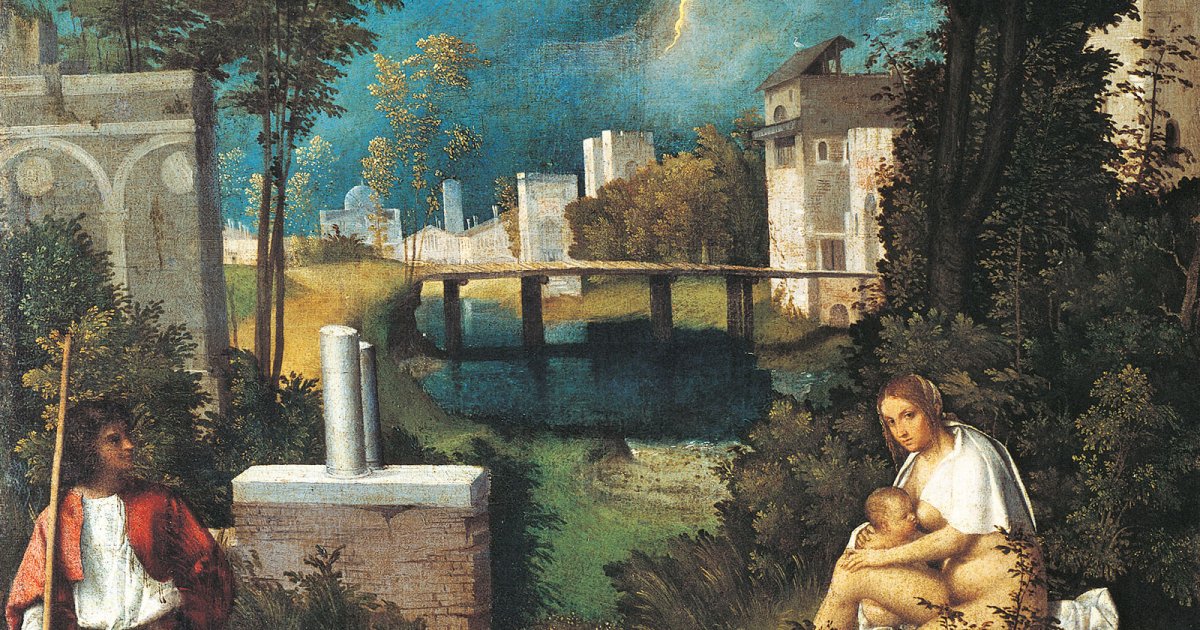ACCADEMIA GALLERY, The Tempest - Giorgione
 Language: English / USA
Language: English / USA
The so-called "Tempest" by Giorgione da Castelfranco, who is one of the greatest geniuses of Venetian 16th-century painting, is also one of the most mysterious masterpieces. You won't often find yourself standing before a painting where merely figuring out the subject is difficult: even the ancient art critics didn't know how to define it, and simply called it "a landscape with a gypsy". X-ray analyses that revealed the presence of other figures which Giorgione successively eliminated have further deepened the mystery.
The scene was painted in the early 1500s and is marked by the presence of nature: even though you can easily distinguish two figures in the painting, the landscape is by no means a simple background, but instead takes on a leading role. It is a very rare case for Renaissance painting, and will probably make you think of an artistic movement that actually developed three centuries later: Impressionism. The slow and intense pictorial style with ultra-lightweight layers of color creates an atmosphere with strong emotions and deep foreboding.
As I said, few paintings from the Renaissance have sparked so much discussion among scholars in order to understand its meaning. The most recent theories define the young, robed man and the naked woman nursing a baby as Adam and Eve driven away from Eden; but beyond hypotheses, the element that strikes most is the unusual stormy landscape, cut by the lightning in the background. The painting's weather is another participant in the action: the ground, the air, the light, the houses, the trees - it all forms a unified whole, and the flash of lightning accentuates a sense of suspense and mystery.
FUN FACT: Giorgione is mysterious, also for the small number of works by the painter, who succumbed to a very early death during the plague epidemic of 1510. In such cases, the objects that belonged to plague victims, including paintings left in their workshops, were burned. Some of Giorgione's works were saved thanks to the intervention of some of his students, including young Titian, who claimed to be the authors of the canvases.



